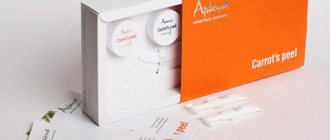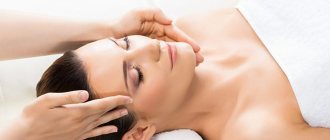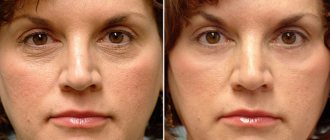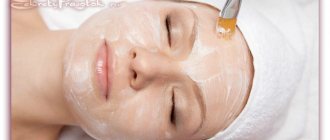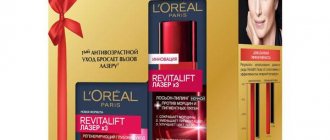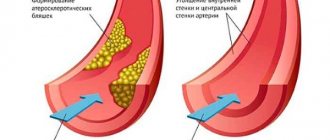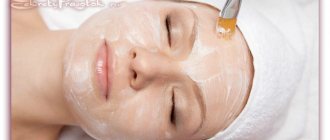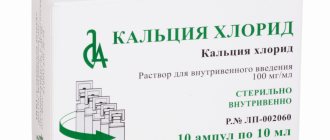With the arrival of spring and summer, the active sun returns to our lives. This means that many people are again thinking about sunscreen cosmetics, because it is well known that ultraviolet radiation accelerates the aging of the skin, pigment spots and wrinkles appear on it. What should be in a UV protection cream for it to be truly effective? Sometimes you can hear that ferulic acid provides maximum protection for the skin. Manufacturers and advertising say that this substance is almost a panacea for all skin problems, especially aging skin. Today we will carefully analyze what ferulic acid is, how it affects the skin and whether it affects it at all.
Ferulic acid: what is it?
Ferulic acid is a plant-based antioxidant substance that can often be seen in the list of ingredients in anti-aging skin cosmetics. It is also known to chemists as 4-hydroxy-3-methoxycinnamic acid. This polyphenolic compound is a derivative of cinnamic acid and is highly soluble in water and alcohol. This substance received its name thanks to the ferula plant, which actually contains it. In addition, it is present in many grains, especially wheat, amaranth, brown rice and oats, nuts, coffee, beets, eggplant, citrus fruits, apple seeds, pineapples, as well as in the bark, seeds and green parts of coniferous trees. By the way, ferulic acid is a very important component for plants, since it is responsible for the strength of the cell membrane and protects against overly active sun and pathogenic microorganisms.
Content:
- Ferulic acid: what is it?
- Properties of ferulic acid
- How does it affect the skin?
- Professional use of ferulic acid in cosmetology
- Other beneficial properties for the body
- Harm and side effects of ferulic acid
Ferulic acid has an anti-inflammatory effect, and as an antioxidant it can protect against ultraviolet radiation. It inhibits the production of melanin in the skin, thereby slowing down the appearance of pigmentation, and also creates a depigmenting effect of medium intensity. In cosmetology it is known as a substance that can prolong youth.
For cosmetic purposes, it is usually used in the form of a yellowish powder. By the way, on product labels this substance can be found under several names, most often natural or natural ferulic acid, or trans-ferulic acid. Both names indicate the same ingredient; the difference between them lies only in the scope of application of this substance. Trans-ferulic acid is most often seen in the list of ingredients in dietary supplements intended to improve the condition of the skin, and natural ferulic acid is found in cosmetic products, usually with an anti-aging effect.
Side effects
Since the peeling composition is a chemical preparation, the required concentration should be observed, adhere to the rules of the procedure and take into account the individual characteristics of the client. Only in this case will the safety of peeling be guaranteed.
Possible side effects:
- redness - may appear immediately after the procedure; usually disappears after a few hours;
- mild peeling - usually begins on the third or fourth day after peeling and persists for one to two days;
- mild swelling - lasts no more than a day.
If you follow the advice of a cosmetologist, side effects can be minimized or avoided altogether.
Properties of ferulic acid
According to a 2002 Japanese study, this substance is able to seek out and destroy several types of free radicals in the body, including superoxides, hydroxyl radicals, and nitrogen oxides [1].
In 2004, Italian experts, based on the results of several studies, came to the conclusion that ferulic acid is a more powerful antioxidant than alpha-tocopherol (vitamin E), beta-carotene and ascorbic acid (vitamin C) [2]. And researchers from Duke University (North Carolina, USA) found that it acts synergistically (enhances the effect) on other antioxidants, including vitamins C and E [3]. Ferulic acid is believed to improve health and prevent certain diseases. In addition, it is used as a skin care product [4][5].
Precautions when exfoliating at home
When performing ferul peeling at home yourself, it is especially important to adhere to all the rules and precautions:
- Use acid with a concentration of no more than 12%, otherwise you will get burned;
- After the procedure, use moisturizers and sunscreens;
- Do not overexpose the drug - 12 hours is enough;
- Do not peel off any peeling or film that appears;
- Do not use cosmetics and scrubs during recovery;
- Protect your eyes and lips while applying the peeling composition - you can apply a rich cream.
Important! Even when using peeling at home, you need to act exactly according to the algorithm and be sure to follow all precautions, and do not neglect protective equipment during the recovery period. Otherwise, even such a loyal procedure can lead to serious problems with skin health.
How does it affect the skin?
Ferulic acid is an active component of many anti-aging serums. This substance is able to resist free radicals, thereby slowing down the aging process of the body.
Free radicals are particles that are formed, for example, due to disruption of the structure of molecules. They are capable of damaging other molecules in the body, thereby creating a kind of chain reaction. Collagen may be part of this reaction, and its destruction is the main cause of wrinkles. In addition, free radicals can cause hyperpigmentation and skin irritation. Ferulic substance, on the contrary, prevents these processes.
In cosmetics, the ferulic compound is usually present together with vitamin C, which is also often added to anti-aging cosmetics. But ascorbic acid itself is a very unstable substance that quickly breaks down, especially under the influence of the sun. By the way, this is why products containing vitamin C are usually produced in opaque containers or dark glass. Ferulic acid stabilizes vitamin C, making it less sensitive to oxygen, high temperature and UV radiation [3].
Research conducted in 2005 showed that ferulic acid in combination with vitamins C and E provides double the amount of photoprotection for the skin, so this combination of components is often added to sunscreens. The study authors also noted that this combination of chemicals slows photoaging, the age-related changes in the skin caused by regular sun exposure. In addition, ferulic acid is believed to reduce the risk of skin cancer.
In 2008, scientists conducted an experiment with the participation of 10 volunteers. It turned out that a mixture of antioxidants consisting of vitamin C, ferulic acid and phloretin (a flavonoid found in the bark and fruits of apple trees) effectively protects the skin from ultraviolet radiation. By the way, some experts have suggested that exposure to ultraviolet light only increases the antioxidant properties of ferulic substance.
As you know, the aging process of the skin is influenced by many factors, including poor environment, chronic stress, and poor nutrition. In such cases, ferulic acid will also help slow down aging. It is beneficial for the skin of people who suffer from insomnia or chronic inflammatory processes. These factors contribute to the formation of free radicals and DNA damage in the body, which ultimately leads to too early wrinkles and rapid fading. And ferulic acid helps slow down these processes.
It is worth adding that it moisturizes the skin well and stimulates the synthesis of collagen and elastin fibers, thereby restoring the tissue. This substance is also useful for skin redness. In this case, it acts as a sedative and anti-inflammatory agent.
Ferulic acid produces the most noticeable effect when applied topically. In cosmetology, it is usually added to sunscreen products, anti-wrinkle creams, lotions, face masks, body scrubs, products for acne, acne and seborrhea. Antiperspirants may contain a synthetic form of this acid [4][5]. As a rule, its concentration in cosmetic products ranges from 0.5 to 1%.
To enhance the effect of cosmetics based on ferulic acid, it is also useful to consume products containing this substance. Although it is unlikely that it will be possible to achieve dramatic improvements in the condition of the skin solely through diet, the body will certainly feel certain benefits from such food.
results
If you apply this cleaning method once, there will be no visible results. Cleansing with ferulic acid is best done in courses of 5-7 sessions, with a break of 7 days , two or three times a year.
Only such regular care will give visible results.:
- normalization of the functioning of the sebaceous glands (with oily skin, secretion production will decrease, with dry skin, it will increase);
- a noticeable reduction in seasonal and age-related pigmentation;
- improvement of complexion (whitening and tone alignment, mattifying effect and moisturizing, which will give the skin freshness);
- reduction of shallow expression wrinkles;
- complete elimination of inflammatory processes (acne, blackheads, pimples, acne);
- light lifting effect (the contour of the face becomes clear);
- prevention of skin sagging, age-related changes and premature aging.
Are you tired of leaving huge amounts of money in salons yet? Here are 5 peelings that you can do at home:
- Gentle cleansing with soap.
- Pyruvic exfoliation.
- Cleaning with hydrogen peroxide.
- With calcium chloride.
- Salicylic.
Professional use of ferulic acid in cosmetology
Due to its wide range of effects on the skin, ferulic acid is often used during professional cosmetic procedures. Cosmetologists usually use this acid in a concentration of 12% (sometimes 30%), and also in combination with florentin, hyaluronic acid, vitamins E and C. By the way, if previously this substance was introduced into cosmetics in a combination of alcohol or other solvents, modern biotechnologies make it possible create cosmetics without additional solvents.
One of the most popular procedures using ferulic substance is acid peeling. It is intended for skin with signs of photoaging (pigment spots, wrinkles), which has lost firmness, elasticity, natural color, as well as acne, melasma, freckles and seborrhea. But a few days before ferul peeling, you should not use self-tanning, visit a solarium, or do hair removal. And after the procedure, it is necessary to use creams with increased UV protection.
Peeling is done as follows: first, the skin should be thoroughly degreased, then a layer of ferulic acid should be applied to it with massage movements and left until a white film mask appears. It can remain on the body from 1 to 10 hours (depending on the condition of the skin). After which the product is washed off.
Peeling using ferulic acid is contraindicated in the presence of skin irritations, as well as in persons taking vitamin A-based medications. It is better not to carry out the procedure for pregnant and lactating women.
In addition, ferulic acid is used in mesotherapy, where this substance activates skin regeneration processes and strengthens elastin and collagen fibers [4][5][6].
Recovery
What is especially pleasing about ferul peeling is that there is practically no recovery period. It lasts only 2 hours after visiting a cosmetologist and does not lead to uncomfortable consequences - peeling and crusts on the face. This means you can safely leave the house the next day.
But still, during the course you need to use sunscreen and moisturizers (especially in the summer), and also minimize skin irritation, that is, limit contact with water, decorative cosmetics, scrubs, and do not rub or scratch your face.
Important! If a film or crust appears on the face (this happens rarely, but still) you should under no circumstances peel it off; it should come off on its own.
Other beneficial properties for the body
Although ferulic acid is mainly used for skin care, scientists still remind that it has other beneficial properties for the human body.
It is believed that ferulic acid as a dietary supplement may be beneficial for people with osteoporosis and menopausal women (reduces hot flashes), as well as for the prevention of cancer and Alzheimer's disease.
According to studies conducted by Americans in 2002, ferulic acid helps lower blood pressure. Laboratory experiments conducted on mice showed that this compound causes blood vessels to dilate, causing blood pressure to decrease. And in 2013, experts found confirmation that ferulic acid improves the structure and functionality of the heart, blood vessels, liver and kidneys, especially if there is a history of high blood pressure. These experiments were also carried out on rodents, however, experts suggest that this substance has a similar effect in the human body.
After conducting experiments on mice, scientists also hypothesized that ferulic acid may be useful in treating diabetes. It turned out that this compound helps regulate blood sugar levels. Later, another interesting pattern was discovered. Ferulic acid combined with resveratrol reduces liver, kidney and pancreas damage in diabetic mice. Experts explain this effect by the antioxidant and anti-inflammatory properties of the substances mentioned.
Best materials of the month
- Coronaviruses: SARS-CoV-2 (COVID-19)
- Antibiotics for the prevention and treatment of COVID-19: how effective are they?
- The most common "office" diseases
- Does vodka kill coronavirus?
- How to stay alive on our roads?
In addition, the ferulic compound is used as a preservative in the food industry and as a component of some medications. It is also used by athletes who want to increase muscle mass. However, due to the lack of sufficient information about the effects of ferulic acid on the human body, experts warn against long-term or regular use of dietary supplements containing it. To avoid complications or unwanted side effects, this substance should not be used for self-treatment of diabetes mellitus or cardiovascular disorders [5].
Indications and contraindications for use
There are a number of skin problems for which a certified esthetician may prescribe a ferul peel procedure. These include:
- Biological aging of the skin;
- Hyperpigmentation of various etiologies;
- Excessive dryness/oily skin;
- Acne or its consequences;
- Weak skin vessels;
- Enlarged pores;
- Contaminated skin, etc.
Ferulic peeling is completely safe for the skin and is perfect for people with increased sensitivity or a low pain threshold. It is considered all-season because it can be done even in summer, which is rare for chemical peels.
But, despite all the positive aspects of the procedure, we should not forget that it is not a magic cure and can cause harm in some cases. Main contraindications to the use of phenol peeling:
- Purulent, infectious skin diseases;
- Skin inflammation;
- Violation of the integrity of the epidermis;
- Acute herpes;
- During pregnancy and lactation, peeling is undesirable, which is associated with an unpredictable reaction during this period of a woman’s life;
- Allergy to peeling components.
